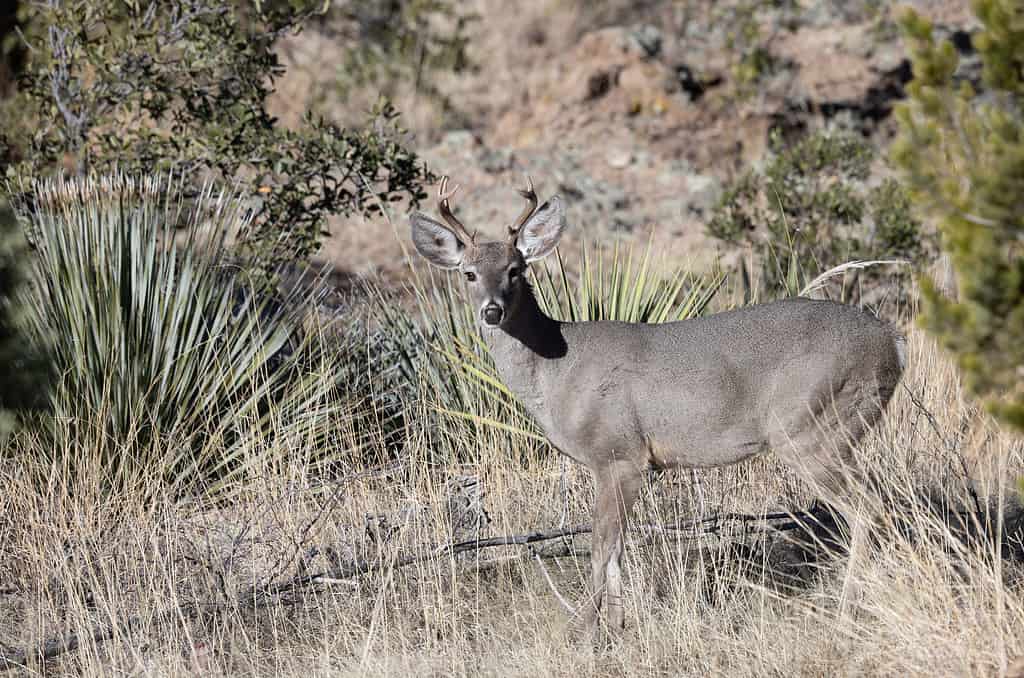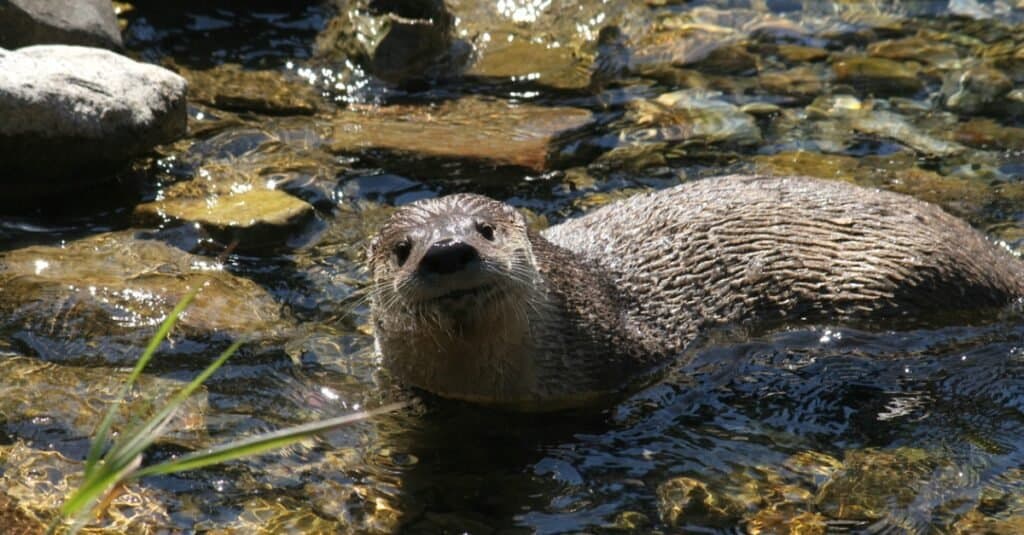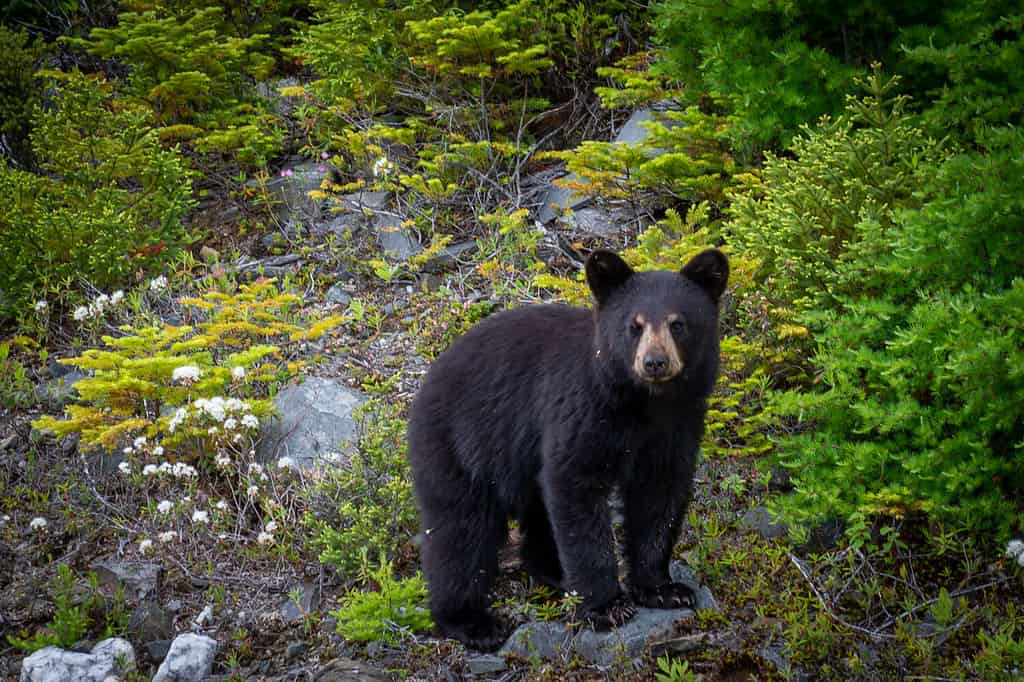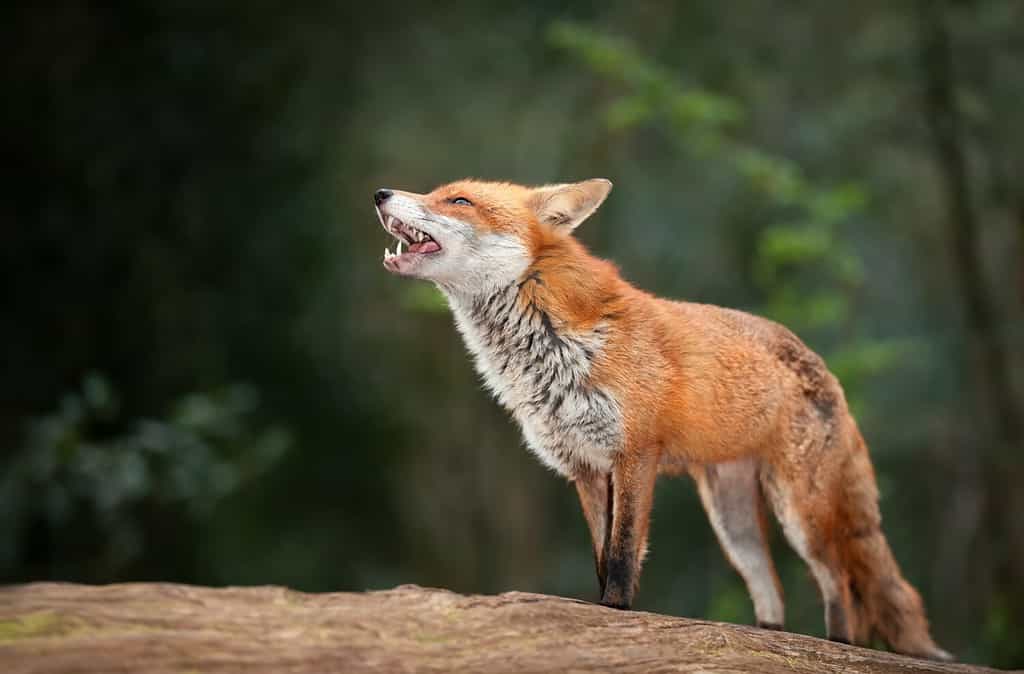Georgia is one of the best states to visit if you’re looking to view wildlife, especially whitetail deer. Within Georgia, experts estimate there are at least 1.27 million whitetail deer, the only deer population in the state. As you can imagine, whitetail deer hunting is a popular activity and sport with just abundant they are. Can you guess just how big these deer get? Keep reading to discover the largest whitetail deer ever caught in Georgia.
What is the Largest Whitetail Deer Ever Caught in Georgia?
The largest whitetail deer ever caught in Georgia scored 191 4/8. Buck Ashe has kept this record since 1962 for the largest typical whitetail deer. What about the largest nontypical whitetail deer in Georgia? The record for the largest nontypical whitetail deer is 249 5/8, quite a lot larger than the largest typical whitetail deer. Billy J. Padgett caught this 249 5/8 scoring beast in 1998.

There are two whitetail deer records in Georgia. The largest whitetail deer ever caught in Georgia scored 249 5/8.
©iStock.com/twildlife
About Whitetail Deer
Now that we’ve discovered the largest whitetail deer ever caught in Georgia, we can learn more about this amazing deer species. Whitetail deer go by a few names. They are sometimes also called white-tailed deer or Virginia deer. These deer are members of the Cervidae family. There are at least 26 recognized subspecies.
Appearance and Size
Whitetail deer differ in appearance and size depending on the subspecies and their environment. For instance, whitetail deer in Minnesota are larger than those in the Florida Keys. Male whitetail deer weigh between 150 to 300 pounds, although larger deer aren’t uncommon.
Most whitetail deer have thick reddish-brown coats that change color depending on the season. This color-changing trait helps them camouflage and stay safe from predators. They also have antlers. Males grow antlers and shed them every year. Some female whitetail deer also grow antlers, although not as common. As their name suggests, these lovely animals are best known for their white undertails. This white coloration is especially noticeable when a whitetail deer flashes their tail up, usually in alarm or surprise.

Whitetail deer are also called Virginia deer.
©Tom Reichner/Shutterstock.com
Distribution and Habitat
Whitetail deer have a very wide range. Their location depends entirely on the subspecies. Whitetail deer are native to North America, Central America, and South America. However, they’ve been introduced to other countries and regions of the world including the Caribbean, New Zealand, and Germany.
The Florida Keys deer, also known as simply the Florida deer is an endangered whitetail deer subspecies only found in the Florida Keys. They are very small. Males only weigh up to 75 pounds but may weigh as little as 55 pounds. Another subspecies is the Andean whitetail deer. They are found throughout the Andes mountains in Peru and Bolivia.
Whitetail deer also aren’t picky about their habitat. They live in heavy forests away from human interaction, but may also be found near residential neighborhoods. They live in mountainous areas and flat woodlands.
Predators
The larger a whitetail deer, the fewer their predators. However, adult whitetail deer are sometimes still hunted by mountain lions, wolves, coyotes, American alligators, and bears. Although true whitetail deer are fast, alert, and quiet. They warn other deer with their raised tails of danger. Young whitetail deer are more vulnerable to attacks by predators.
Diet
Whitetail deer are hungry animals with large diets. They can eat large amounts of food. These deer mainly consume legumes and plants. Whitetail deer are foragers with strong stomachs. They eat shoots, leaves, cacti, and grasses. Interestingly, whitetail deer aren’t entirely herbivores. Some have been recorded hunting and eating birds and field mice.
Other Mammals in Georgia
The whitetail deer is just one mammal in Georgia. Listed below we have other mammals you can find in the state, although not all hold state records.
North American River Otter
The first mammal on our list is the North American river otter. These lovely and social animals have a wide range in North America. The best time to see these semi-aquatic creatures is during the early morning hours. They swim in lakes, marshes, ponds, and rivers. North American river otters are about 2.2 feet long and weigh 18 pounds.

North American river otters are common in Georgia.
©iStock.com/MarcQuebec
Black Bear
The state of Georgia is also home to American black bears. These bears are the smallest species in North America and yet can weigh over 800 pounds. Most American black bears though are between 90 to 551 pounds. Females are about 33% smaller than male black bears. Although black bears have a reputation for being aggressive, attacks and encounters are rare. They typically stay away from humans. Still, you should never purposefully bother a black bear or try to feed it. If you find a black bear near you, wave your arms as widely as possible and yell to scare them away. Never run as they may chase.

American black bears are the smallest species of bear in North America.
©Dolores M. Harvey/Shutterstock.com
Bobcat
Another mammal native to Georgia is the bobcat. These quiet cats are excellent hunters and although they are widespread, they are rarely seen. Bobcats prefer staying away from humans and typically hunt from dusk to dawn. However, they can be active any time of the day depending on the availability of prey. Bobcats are medium-sized wildcats that weigh between 15 and 30 pounds. Female bobcats are generally smaller than males.

Bobcats are excellent hunters. They mainly hunt from dusk to dawn.
©WhirlVFX – Pamela Werrell/Shutterstock.com
Red Fox
The next Georgia mammal on our list is the red fox. Red foxes are native to large parts of the entire Northern Hemisphere. Red foxes are intelligent, active, and excellent hunters. They are such excellent hunters that they are considered an invasive species in Australia as they hunt many native birds. Red foxes have long bodies and short legs. They are about 14 to 20 inches tall at the shoulder. They use their short, but powerful limbs to climb fences nearly 7 feet tall and swim. Although known for their red fur, red foxes have different color morphs. Some are even silver or blackish-brown.

Red foxes are powerful animals. They are excellent climbers and swimmers.
©Giedriius/Shutterstock.com
Coyote
Like whitetail deer, coyotes are extremely common in Georgia. Experts estimate there are over a quarter million, and their population may be growing. Interestingly, coyotes aren’t affected as much as other animals by human development. Instead, they venture into neighborhoods and hunt for birds and domestic pets. Sometimes they even attack trash cans, eating old food. Coyotes are also found in large populated cities like Atlanta. They have strong legs and an excellent sense of sight, smell, and hearing.

Coyotes are very common in Georgia. You can find them throughout the state, including in Atlanta.
©dgenxart/Shutterstock.com
Big Brown Bat
Big brown bats also live in Georgia. This bat species is one of the most common in the United States. You can also find them throughout the Caribbean and in South America. Big brown bats, although larger than other microbats, often weigh less than an ounce. These insectivores especially consume night-flying beetles.

Big brown bats have a wide range. They are found throughout North America, the Caribbean, and South America.
©Jay Ondreicka/Shutterstock.com
North Atlantic Right Whale
Did you know you can also find whales in Georgia? Georgia is home to the North Atlantic right whale. They are majestic, large, and sadly listed as Critically Endangered on the IUCN Red List. So, how big can these whales get? Typically, North Atlantic right whales are about 43 to 52 feet long. The largest measured North Atlantic right whale weighed a jaw-dropping 234,000 pounds.

North Atlantic right whales are labeled as Critically Endangered.
©iStock.com/6381380
Thank you for reading! Have some feedback for us? Contact the AZ Animals editorial team.








